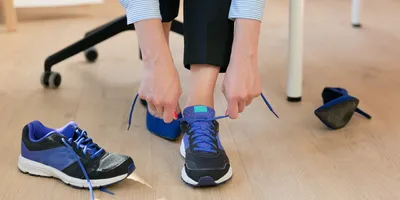New research from the Norwegian University of Science and Technology finds that walking every day—even at a leisurely pace—can significantly lower the risk of chronic lower back pain. The study, published in JAMA Network Open, analyzed data from more than 11,000 adults and found that those who walked longer each day were less likely to develop long-term back issues.
“People who walk more than 100 minutes every day have a 23 percent lower risk of lower back problems than those who walk 78 minutes or less,” said Rayane Haddadj, PhD candidate at NTNU’s Department of Public Health and Nursing.
The findings highlight that the volume of walking matters more than intensity. Even low-intensity activity offers protection, suggesting that consistent movement throughout the day may be more beneficial than short bursts of vigorous exercise.
What the research shows about chronic low back pain
The study used wearable sensors placed on participants’ thighs and backs to monitor both walking duration and intensity over the course of a week. Researchers found a clear link between longer daily walking times and lower risk of chronic low back pain—even after accounting for other factors such as age, gender, and occupation.
“Intensity also plays a role in the risk of long-term back problems, but not as much as the daily amount of walking,” said Haddadj.
According to the research team, encouraging daily walking habits could help reduce healthcare costs linked to musculoskeletal disorders—one of the largest expenses within Norway’s healthcare system and a leading cause of disability worldwide, according to the World Health Organization.
What the research means for laboratory professionals
Back and neck pain are among the most frequent occupational complaints in laboratory settings, often caused by repetitive motion, awkward posture, and long hours at benches or computers. These findings provide a simple, evidence-based strategy that managers can use to support employee well-being.
For lab professionals, incorporating walking meetings, step challenges, or brief movement breaks between experiments can help mitigate the physical strain of prolonged standing or sitting. Even adding five- to 10-minute walks before or after shifts can contribute to improved posture, circulation, and long-term spine health.
Advanced Lab Management Certificate
The Advanced Lab Management certificate is more than training—it’s a professional advantage.
Gain critical skills and IACET-approved CEUs that make a measurable difference.
Building a movement-friendly lab culture
For laboratory managers, integrating low-impact movement into daily operations supports both ergonomic safety and staff morale. Small environmental changes—such as visible reminders to stretch, clear walking paths, or policies that encourage breaks—can reinforce a culture of wellness.
“The findings highlight the importance of finding time to be physically active,” noted study coauthor Paul Jarle Mork, professor at NTNU. “Over time, this could lead to major savings for society.”
A simple habit like walking can be an important tool for labs aiming to improve both health and productivity. Supporting regular movement is not just good for individuals—it’s a practical, preventive measure that contributes to a safer, more sustainable workplace.
This article was created with the assistance of Generative AI and has undergone editorial review before publishing.












